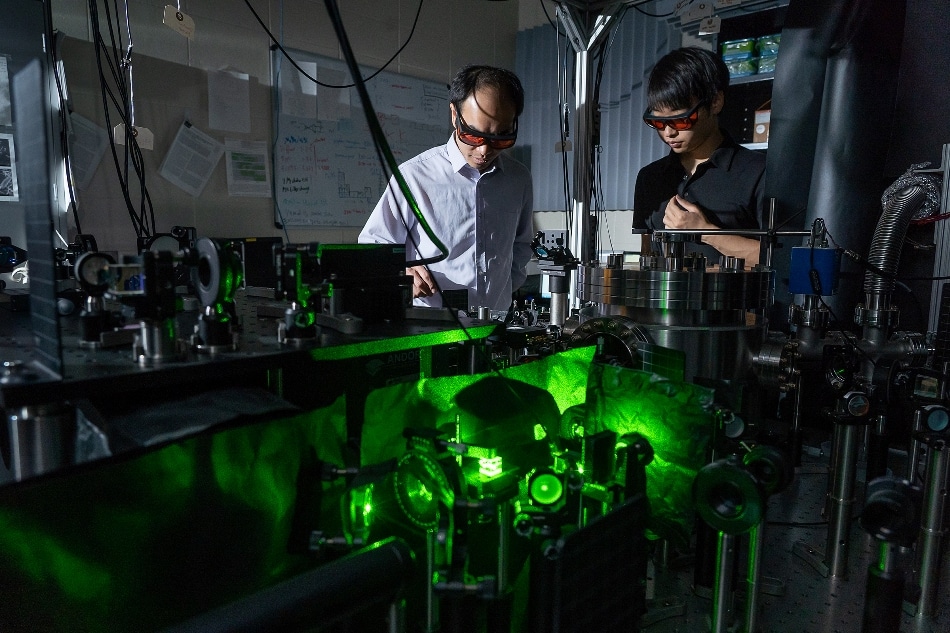Oct 31 2018
Scientists have been successful in developing the fastest man-made rotor in the world, and they consider this will assist them in studying quantum mechanics.
 Tongcang Li and Jonghoon Ahn have levitated a nanoparticle in vacuum and driven it to rotate at high speed, which they hope will help them study the properties of vacuum and quantum mechanics. (Image credit: Purdue University photo/Vincent Walter)
Tongcang Li and Jonghoon Ahn have levitated a nanoparticle in vacuum and driven it to rotate at high speed, which they hope will help them study the properties of vacuum and quantum mechanics. (Image credit: Purdue University photo/Vincent Walter)
This machine can rotate at over 60 billion revolutions per minute and is more than 100,000 times faster when compared to a high-speed dental drill. The outcomes of the study have been reported in the Physical Review Letters journal.
“This study has many applications, including material science,” stated Tongcang Li, an assistant professor of physics and astronomy, and electrical and computer engineering, at Purdue University. “We can study the extreme conditions different materials can survive in.”
Li and his colleagues produced a tiny dumbbell of silica and levitated it in high vacuum with the help of a laser. The laser has the ability to work in a circle or in a straight line - if it is circular, the dumbbell spins, and if it is linear, the dumbbell vibrates.
A spinning dumbbell acts like a rotor, and a vibrating dumbbell acts like a torsion balance, an instrument that measures tiny torques and forces. Although these devices were used to discover entities such as the density of Earth and the gravitational constant, Li believes that as they become more sophisticated, they will be in a position to study things such as the properties of vacuum and quantum mechanics.
People say that there is nothing in vacuum, but in physics, we know it’s not really empty. There are a lot of virtual particles which may stay for a short time and then disappear. We want to figure out what’s really going on there, and that’s why we want to make the most sensitive torsion balance.
Tongcang Li, Assistant Professor of Physics and Astronomy
Li and his colleagues might also be able to study things related to vacuum friction and gravity by observing this tiny dumbbell spin faster compared to anything before it. According to Li, gaining insights into these mechanisms is an indispensable goal for modern physics.
Scientists from Purdue, Peking University, Tsinghua University, and the Collaborative Innovation Center of Quantum Matter in Beijing also contributed to this study. Jonghoon Ahn, a graduate student in Li’s research team, is the first author of this study. The National Science Foundation and the Office of Naval Research funded Li’s study.